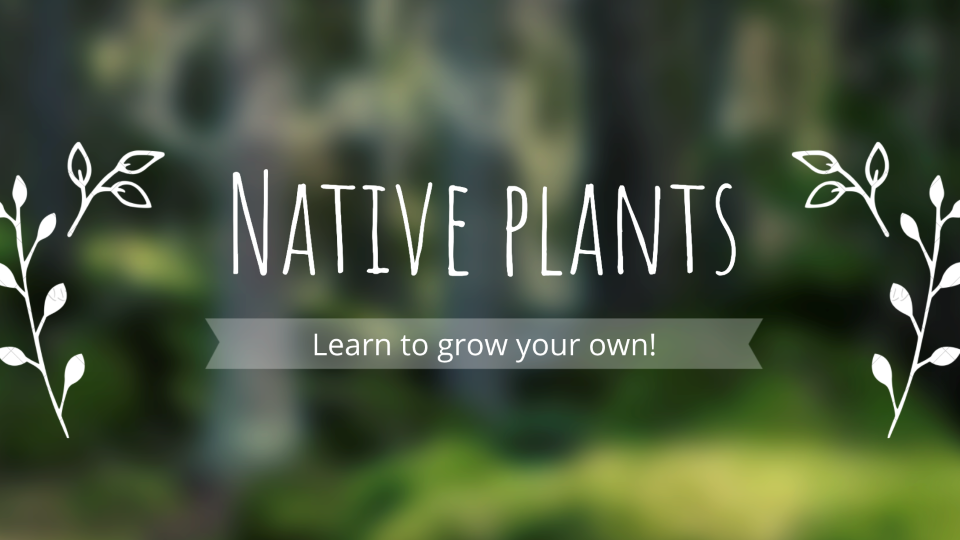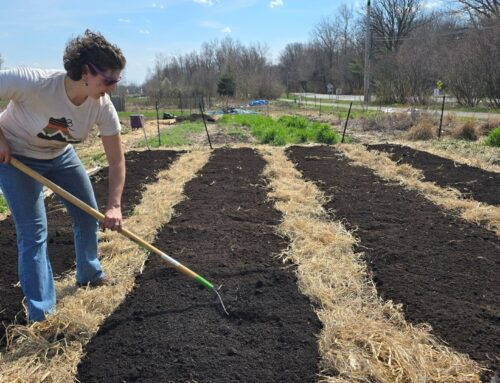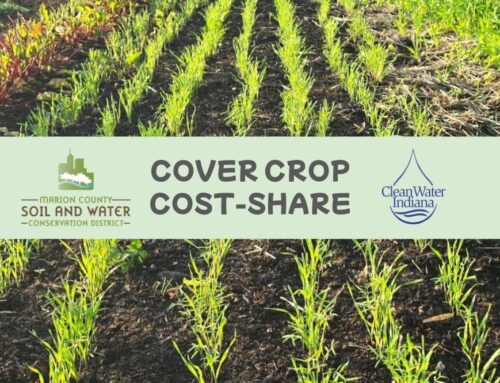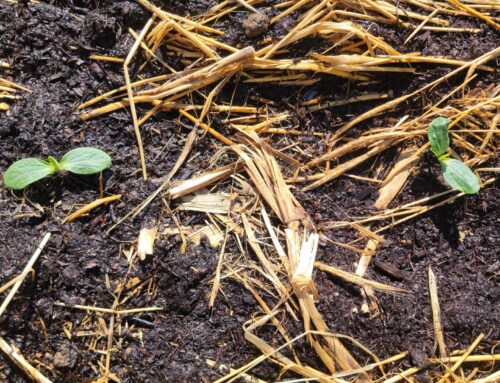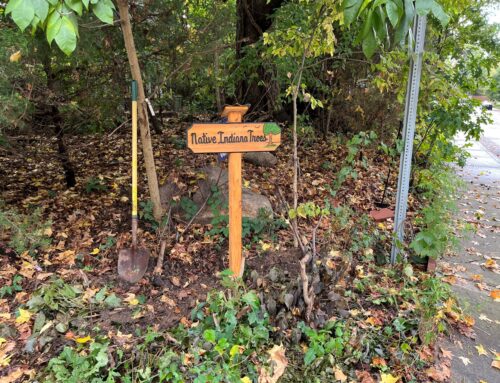– Are you a market farmer looking to expand your offerings by adding native plants for sale?
– Are you a backyard grower who wants to add wildflowers to your garden and landscaping?
– Are you a small farmer looking to add perennial plants to help attract beneficial insects?
Check out this webinar and Q&A session with Kevin Tungesvick, Senior Ecologist with Eco Logic, hosted by the Marion County SWCD. The session includes an introduction from Kevin about species selection, seed treatment, and the basics of how to start propagating native plants and follows up with Q&A.
Watch the recorded webinar here!
Funding support for these workshops is provided in part by the USDA Natural Resources Conservation Service, the National Association of Soil and Water Conservation Districts, and Clean Water Indiana. The USDA-NRCS is an equal opportunity provider, employer, and lender.
QUESTIONS / ANSWERS – Seed Starting / Propagation
- How do you know what seeds need cold or moist stratification?
- See Prairie Moon’s Cultural guide document – in Resources below.
- How do you moist stratify seeds?
- Once seeds are dry, look up how long each species needs moist stratification.
- For example: if a species needs 30 days of moist stratification, then start the process 30 days prior to when you want to sow it.
- Moisten your sterile soil media (seed germination mix) – about 3-4 parts of the seed you are stratifying. Don’t saturate – just to the point you can squeeze a drop or two of water out. Take seed and mix it with this moistened media.
- Put seed and moist media in a ziplock bag / sealed container and put back in the refrigerator – ideally at about 35-40 degrees Fahrenheit.
- For storing seeds at a cold temperature, could they be stored in a basement or garage instead of a refrigerator – what temperature range is the best?
- The ideal storage temperature is 35-40 Fahrenheit. Basements are unlikely to be cold enough, but an unheated garage will likely work OK. Make sure the seeds are stored in rodent-proof containers. Moist stratification should always be done in a refrigerator as the seeds will germinate in the container if the temperature gets too warm.
- What are the best methods for collecting native seeds? How do you store and prep seeds collected?
- Generally, collect seed in late fall. Spring blooming species often ripen from late spring through mid summer.
- Collect seed right before the seed heads “shatter” – meaning seed heads break apart for seed dispersal.
- Grasses – seeds hang together but then inflorescence will start to break apart once seeds begin to dry.
- For many other species – will want to collect when not completely dry – then physically allow to dry in a well-ventilated area. Check seed maturity before harvest. Don’t wait too late in the season to collect – can lose to goldfinches or other seed predators.
- I have collected seeds and kept them in a dry place and would like to plant outside in containers for cold stratification. Should I have put these seeds in the fridge between collection and planting?
- Yes, they should always be stored cold throughout the winter season to maximize viability.
- Can seeds be started in an unheated greenhouse, hoop house, or cold frame, or just leave flats outside in the winter? What is the typical temperature range native seeds tolerate?
- Yes, however you’ll want to start later than if you had a heated space. And if your goal is to start natives for sale, it will be hard to get them to size by spring / early summer without a heated space.
- If in an unheated space, you’ll want to start about April 1st, to be past really hard freezes (25 degrees and colder).
- Make sure space has ventilation – so as not to overheat during afternoon. Don’t want it over 80 degrees during germination.
- Many spring blooming plants will only germinate in cool soil. It is best to let the temperature in a greenhouse drop considerably during the night for species that prefer cool temperatures.
- Warm season grasses (Little Bluestem, Indian Grass, Switch Grass) – wait to seed these until ~ May 1st or in a heated space.
- If sowing in containers outside, keep them in the shade and on the North side of the building so they stay colder / frozen and don’t go through as many freeze / thaw cycles (causes frost heave).
- I hear of two common approaches to winter sowing natives. One suggests to start in milk jugs for a greenhouse effect, and the other suggests to sow them in module trays without any cover because that’s how they’d germinate naturally. Could you comment on how these two very different approaches have persisted for so long, and which you’d recommend in a winter-sowing scenario?
- I have not utilized the milk jug method, but it would likely hasten germination by warming in the sunlight. Be sure ventilation if available to prevent the jug from overheating. Personally, I have always utilized open trays whether outside or in a greenhouse.
- Can you seed natives directly in the soil, or are pots recommended?
- It depends somewhat on your final goal – if you want the seedlings / plants to stay in the spot where you’re seeding them, or if you plan to transplant or sell them.
- If you’re trying to get the seeds established outside in an area of your yard or garden, you can certainly sow natives directly in the soil. If the species you’re sowing need a long moist stratification period, sow them in November or December and let them naturally moist stratify in the soil. If it’s a species that requires a short period of moist stratification, you could sow it in late February to germinate in April.
- In general, does broadcasting seeds outside in January / over winter work to propagate species in fields? Is it best to do this before a snow?
- Yes this is a good way to get natural stratification. Will get good recruitment / germination.
- Key is to have exposed soil (old row crop field or old garden).
- Freeze-thaw cycles provide good seed-to-soil contact.
- Recommend sowing prairies in dormant season, especially if goal is to establish prairie with a lot of forbs and high pollinator value.
- If sowing multiple species at once, this helps ensure you don’t miss their best germination temperature.
- What do you recommend as a substrate to mix into larger quantities of seeds for hand spreading/sowing in winter?
- Don’t recommend sand.
- Soilless potting mix. Lightweight. Use 2-3 parts potting mix to 1 part seed. Mix thoroughly and hand broadcast.
- What, if any, native plants could survive a frost / freeze that might occur after our typical average last first date, e.g. from mid April to early May?
- Native seedlings are generally quite tolerant. Frost is generally not a big issue. Most are adapted to irregularities of midwestern weather. Very few are susceptible – ones that are generally only germinate in warmer weather such as warm season grasses.
- What are recommended sources for native seeds if ordering them online rather than collecting?
- Be sure to select seeds that have an origin that are geographically close to your site.
- See the Resources list at the bottom for additional sources
- Local Indiana sources of native plant stock can be found on the Indiana Native Plant Society’s “Buy Natives” directory – https://indiananativeplants.org/landscaping/where-to-buy/
- Regional seed suppliers can be found on this list.
- How do you know if the seeds you’re ordering are a genotype that’s best suited for your area?
- Talk with a representative from the nursery or seed source. Many work with numerous growers throughout the Midwest, and can help you choose seeds lots that originate from close to your site.
- All Indiana wholesale sources will also have local genotypes.
- What are some species that are easier to grow in cells and 1020 trays? Is there a recommended cell size for 1020 trays?
- Anything with a small to medium-size seed (longest dimension under 1/8th inch.) For germination of transplants, small cells less than 1 inch across will maximize production in limited greenhouse space. It is easier to manage moisture in shallow open germination trays rather than cells.
- When do you know to pot seedlings up? What size pots do you pot them up into?
- Seedlings should have at least 2 true leaves before transplanting them into salable pot or transplanting pot.
- Seedlings do best potted into 2-4” pots. After additional growth they can be potted into ½ gallon or larger pots if desired.
- What is the preferred growing medium – for seed starting and then for potting up into larger containers?
- Seed starting
- Pretty much any seed starting mix – found at nurseries, garden supply stores, online. Want fine texture.
- Main potting mix
- Doesn’t need to be sterile – biologically active is best.
- Recommend ones that have composted pine bark as the base (sometimes rice hulls or coconut fiber also). These are by-products of other industries. Try NOT to use peat / sphagnum.
- More drainage is important for plants that form rosettes (penstemon, cardinal flower) → overwintered better b/c they didn’t stay so wet over the winter.
- Seed starting
- How do you know if a seed mix is sterile, and what medium do you want to be sterile?
- Any new seed starting mix from a store or nursery will be sterile.
- Why is the typical recommendation to use a sterile medium when the soil [the seeds are] native to is not? I can see this is for disease but, does survival of fittest not make a stronger plant as in nature?
- Because seedlings are typically crowded, and greenhouses are very damp and humid, fungal pathogens have an ideal environment for rapid spread and can kill thousands of seedlings very quickly. This is not a natural seedling environment, so precautions are necessary to prevent rapid spread of disease. Sowing outdoors in non-sterilized soil in the ground is fine but expect some mortality.
- Do you recommend inoculating plug media with native-harvested or bought arbuscular mycorrhizae?
- Yes this can be beneficial.
- There are commercially available strains.
- Vam endo mycorrhizal is best. Grows within the roots.
- Introduce this into the potting mix when pot up from seed flat to final container.
- Do you recommend adding vermicompost (red worm castings) to plug media?
- Fine to use. Has good nutrient properties.
- Should legumes be inoculated? Can you inoculate them after planting?
- Yes, and they are specific to the genus – ie senna or baptisia.
- How wet can seeds stay without rotting? How do you prevent mold on top of seed trays?
- Rot is often related to a fungal pathogen. Can generally avoid by using sterile seed medium. They can usually tolerate quite a bit of wetness. Ones to watch are larger seeds (have more endosperm). Generally, legumes should be moist stratified for shorter period – prone to rotting.
- Do you have any problems with top watering native seedlings?
- This is not a problem as long as it is done gently and preferably early in the day as the foliage dries before nightfall.
- What is the best way to germinate False indigo?
- Scarify the seed.
- Moist stratify for only 10-15 days.
- They develop a taproot almost immediately. Best to sow directly into final container (3-4” pot) rather than seed flat first. Don’t like to be transplanted.
- Do you have any general propagation information for trees and shrubs?
- Most have larger seed.
- Direct sow into a container, rather than seedling flat, in the fall and then overwinter in the container.
- Any that come from a fruit or berry that has fleshy covering – remove covering.
- Many are recalcitrant – can’t dry out too much.
- Tips for germinating spicebush?
- Remove covering.
- Has a large seed – sow directly into container rather than seedling flat.
- Cuttings vs. seeds
- Generally, seeds are better because of natural diversity vs. with cuttings you can end up with all clones.
- Have you had success germinating seeds with thick seed coats such as puccoons? Is there a source for hairy/hoary puccoon?
- Challenging. Consult other seed sources.
- Scarification – sandpaper
- Have persimmon seeds that have passed through the digestive tract of an animal been sufficiently prepared for planting by that ‘natural scarification”?
- Likely so. Likely remove any outer covering and sow immediately – overwinter in pot in moist cold soil.
- Do pawpaw need to stay wet?
- Likely best to remove fleshy coating and sow immediately – overwinter in pot in moist cold soil.
- Do you have recommendations for Indiana native seed collection and germination books?
- The Prairie Propagation Handbook has good information from Wisconsin. Plants should always be monitored for seed collection frequently once the flowers have faded. The Prairie Moon cultural guide is one of the best sources for seed treatment and germination protocols.
- Is a license or permit required to sell plants?
- Do you have any experience using native grasses as a mulch crop? (potentially Switchgrass?) I have not used native grasses in this way, but I agree switchgrass would be the best as the stiff stems and leaves would function more like straw that native grasses that are more prone to lodging due to weak stems like big bluestem.
RESOURCES:
- NRCS – Native Plant database – https://plants.usda.gov/java/
- INPS Native plant sources – https://indiananativeplants.org/landscaping/where-to-buy/
- Good Natives for the Garden Marion County SWCD – https://marionswcd.org/wp-content/uploads/marionswcd-native-plantings-for-beneficial-insects-and-pollinators.pdf
- Purdue List of Indiana Native Plants – https://extension.entm.purdue.edu/publications/POL-6/POL-6.pdf
- Germination Codes / Seed Starting basics – Prairie Moon – https://www.prairiemoon.com/PDF/Prairie-Moon-Nursery.Seed-Starting-Basics.pdf
- “Cultural Guide” Prairie Moon – Downloadable Excel Doc. with info about many native plants and guidance – Follow this link to “FAQs” and then “How-To Guides” and then “Cultural Guide – Excel Download.” https://www.prairiemoon.com/blog/faqs
- Growing Trees from Seed by Henry Kock as a reference for growing trees and shrubs and vines.
- DNR’s Division of Fish & Wildlife list: https://www.in.gov/dnr/fishwild/files/fw-Seed_Suppliers.pdf
- Seed Germination Theory And Practice” – https://gardenfundamentals.com/wp-content/uploads/2018/06/Deno-Seed-Germination-Introduction-min.pdf


